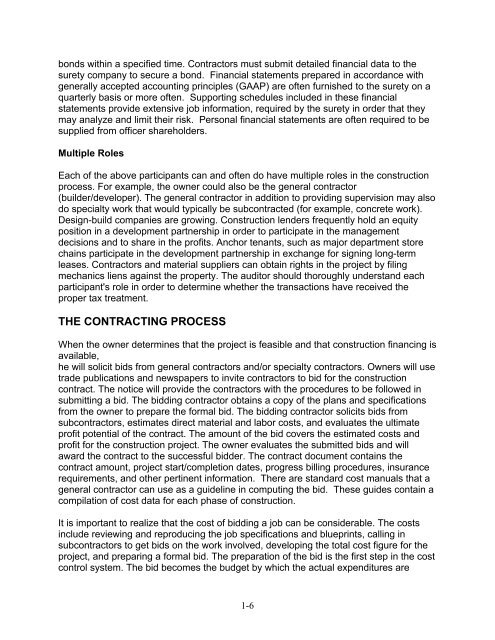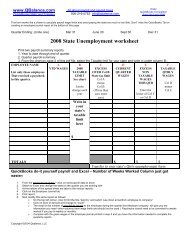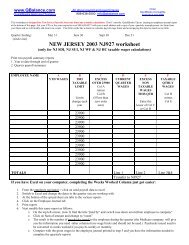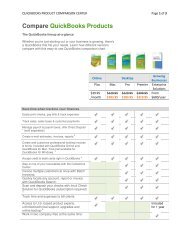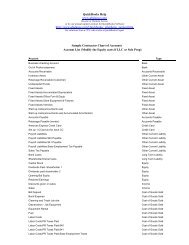Construction Industry - Audit Technique Guide - Uncle Fed's Tax ...
Construction Industry - Audit Technique Guide - Uncle Fed's Tax ...
Construction Industry - Audit Technique Guide - Uncle Fed's Tax ...
You also want an ePaper? Increase the reach of your titles
YUMPU automatically turns print PDFs into web optimized ePapers that Google loves.
onds within a specified time. Contractors must submit detailed financial data to thesurety company to secure a bond. Financial statements prepared in accordance withgenerally accepted accounting principles (GAAP) are often furnished to the surety on aquarterly basis or more often. Supporting schedules included in these financialstatements provide extensive job information, required by the surety in order that theymay analyze and limit their risk. Personal financial statements are often required to besupplied from officer shareholders.Multiple RolesEach of the above participants can and often do have multiple roles in the constructionprocess. For example, the owner could also be the general contractor(builder/developer). The general contractor in addition to providing supervision may alsodo specialty work that would typically be subcontracted (for example, concrete work).Design-build companies are growing. <strong>Construction</strong> lenders frequently hold an equityposition in a development partnership in order to participate in the managementdecisions and to share in the profits. Anchor tenants, such as major department storechains participate in the development partnership in exchange for signing long-termleases. Contractors and material suppliers can obtain rights in the project by filingmechanics liens against the property. The auditor should thoroughly understand eachparticipant's role in order to determine whether the transactions have received theproper tax treatment.THE CONTRACTING PROCESSWhen the owner determines that the project is feasible and that construction financing isavailable,he will solicit bids from general contractors and/or specialty contractors. Owners will usetrade publications and newspapers to invite contractors to bid for the constructioncontract. The notice will provide the contractors with the procedures to be followed insubmitting a bid. The bidding contractor obtains a copy of the plans and specificationsfrom the owner to prepare the formal bid. The bidding contractor solicits bids fromsubcontractors, estimates direct material and labor costs, and evaluates the ultimateprofit potential of the contract. The amount of the bid covers the estimated costs andprofit for the construction project. The owner evaluates the submitted bids and willaward the contract to the successful bidder. The contract document contains thecontract amount, project start/completion dates, progress billing procedures, insurancerequirements, and other pertinent information. There are standard cost manuals that ageneral contractor can use as a guideline in computing the bid. These guides contain acompilation of cost data for each phase of construction.It is important to realize that the cost of bidding a job can be considerable. The costsinclude reviewing and reproducing the job specifications and blueprints, calling insubcontractors to get bids on the work involved, developing the total cost figure for theproject, and preparing a formal bid. The preparation of the bid is the first step in the costcontrol system. The bid becomes the budget by which the actual expenditures are1-6


